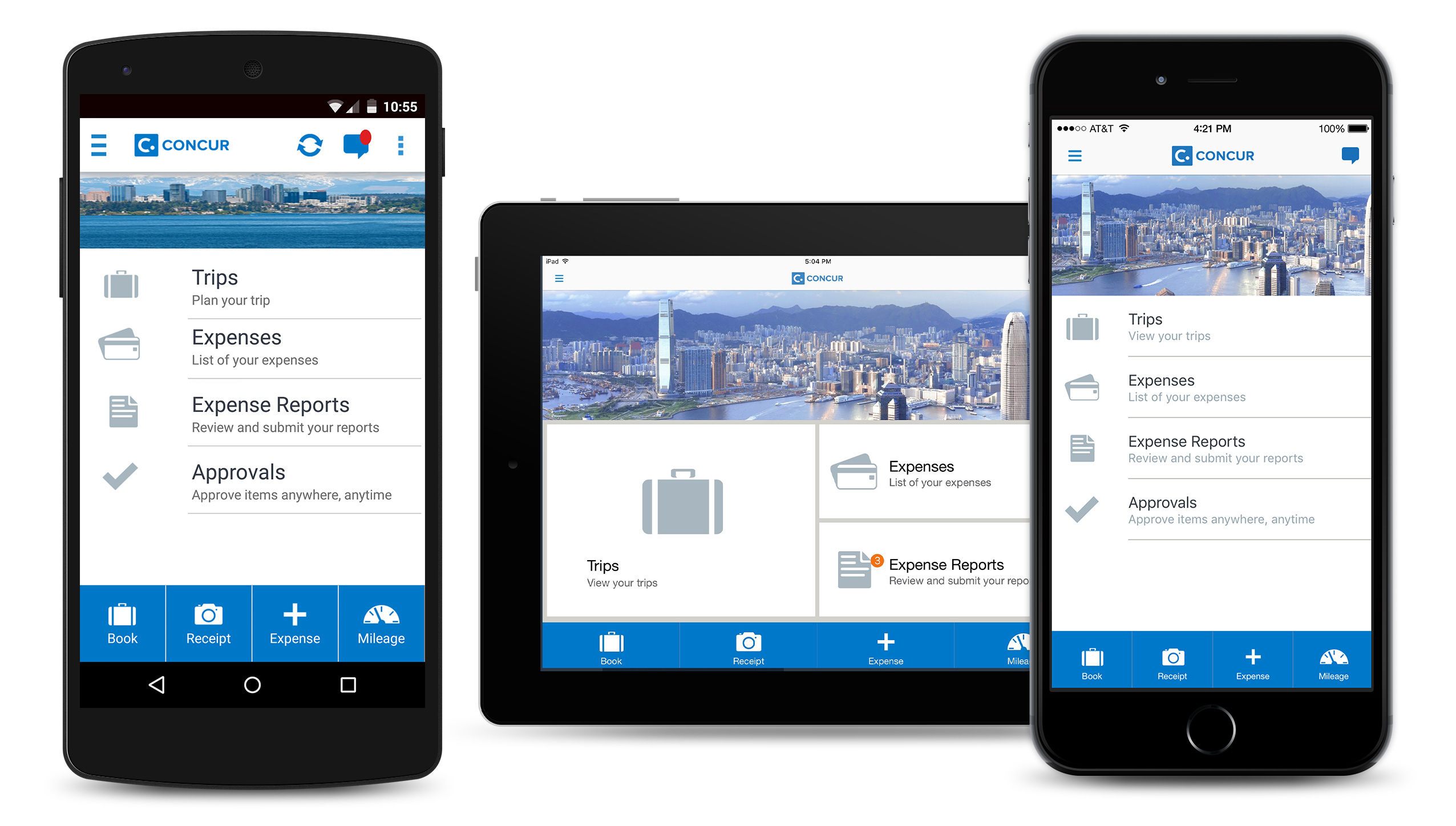Today’s business landscape demands Finance leaders implement effective spend analysis and it has become crucial for organizations looking to optimize costs, mitigate risks, and drive growth. The benefits of spend management include enhancing financial efficiency, improving cash flow, and integrating automated solutions. SAP, a global leader in enterprise software, has been at the forefront of innovation in spend solutions.
This blog post explores the cutting-edge technologies and features that SAP is introducing to revolutionize procurement, sourcing, spend analysis and expense management processes.
What is the Spend Management Process
Spend management is the process of controlling and optimizing a company’s expenditures. It involves tracking all expenses, from procurement to payment, ensuring that resources are used efficiently. The process includes analyzing spending patterns, negotiating with suppliers, and implementing policies to reduce costs while maintaining quality. Effective spend management helps organizations minimize waste, improve profitability, and ensure financial compliance.
Spend management involves overseeing and controlling a company’s expenses. It includes several key steps:
- Identifying Needs: Determining what goods or services are required.
- Sourcing Suppliers: Finding and selecting vendors that offer the best value.
- Purchasing: Placing orders and acquiring the necessary items or services.
- Invoice Management: Ensuring that invoices are accurate and match the orders received.
- Payment Processing: Handling payments to suppliers according to agreed terms.
- Analysis and Reporting: Reviewing spending data to identify trends, areas for cost savings, and opportunities for improved efficiency.
In most organization, these are manual processes. Spend Management process helps businesses manage their costs effectively, avoid overspending, and maintain financial discipline.
Should Companies have a Spend Management Strategy and Why?
Yes, companies should have one and here’s why:
- Cost Control: A good business spend management strategy helps businesses monitor and control expenses, preventing overspending, cost reduction and reducing unnecessary costs.
- Improved Efficiency: By conducting strategic activities like streamlining purchasing processes and managing supplier relationships, companies can save time and resources.
- Financial Visibility: A clear strategy provides insight into where money is being spent, helping to identify trends and areas for cost-saving opportunities.
- Risk Reduction: Managing spend proactively reduces the risk of fraud, errors, and compliance issues.
- Better Decision-Making: With accurate data on spending, companies can make informed decisions that align with their financial goals.
- Remove Manual Processes: Procurement and Finance teams should work closely together to ensure all manual processes should be automated. The Goal should be reducing procurement costs, track employee spending, track business purchases, and complete integration to the accounting software. Period!
Overall, business spend management is essential for maintaining financial health and ensuring sustainable growth.
Why Spend Management Software Solutions Are Required
1. Cost Control
Spend solutions help businesses monitor and control their expenses and spend data to ensure business profitability. By tracking spend data in real-time, companies can identify areas of overspending and take corrective actions, leading to significant cost savings.
2. Budget Compliance
These solutions ensure that spending aligns with budgetary constraints. Automated alerts and detailed reports help managers stay within budget, preventing financial overruns, analyze spend date and promoting fiscal discipline.
3. Enhanced Visibility
Spend management tools provide comprehensive visibility into spend data, emphasizing the importance of centralizing and analyzing it for effective decision-making. This transparency helps businesses understand where their money is going, making it easier to identify inefficiencies and areas for improvement.
4. Supplier Management
Effective spend management includes better handling of supplier relationships and category management. The procurement department plays a crucial role in managing purchase orders, negotiating discounts with suppliers, and performing essential analytics to optimize strategic sourcing, business intelligence and supplier management. By analyzing spend data, companies can negotiate better terms, consolidate suppliers, and reduce procurement costs.
5. Fraud Prevention
Automated spend management systems reduce the risk of fraud by implementing strict approval workflows and monitoring spend data transactions for irregularities. Poor spend management can lead to disorganization, increased costs, unnecessary spending and inadequate supply chain management, which negatively impact a company’s performance. This enhances financial security, future profitability and integrity.
6. Strategic Decision Making
Access to detailed spend data supports the development of a spend management strategy, emphasizing the need for strategic planning and digitization of processes. Businesses can use this information to develop strategic initiatives, optimize resource allocation, future profitability and improve overall financial performance.
7. Compliance and Reporting
Spend solutions help ensure compliance with internal policies and external regulations. They provide accurate and timely reporting, which is essential for audits and regulatory requirements.
8. Efficiency and Productivity
Automating spend management processes reduces manual effort, saving time and resources. Spend management software automates processes and enhances real-time visibility of expenses, aiding in financial decision-making, streamlining procurement, business intelligence and reduced company spending. This allows employees to focus on more strategic tasks, improving overall productivity.
Let’s look into the different SAP Spend Management solutions and what do they have to offer:
- SAP Spend Control Tower: A Comprehensive Spend Management and Analysis Platform
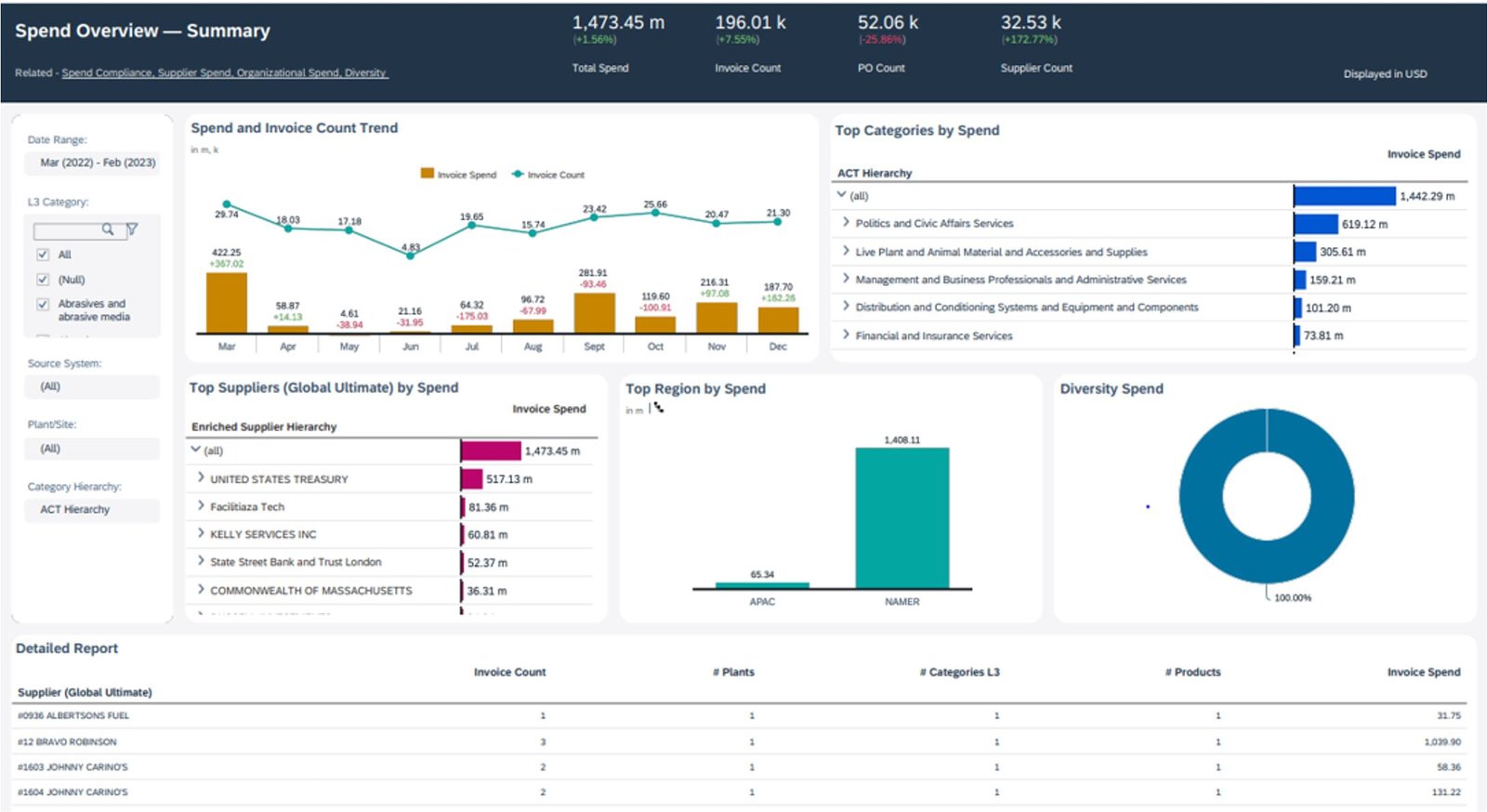
One of the most significant innovations in SAP’s spend management portfolio is the SAP Spend Control Tower, which manages the expenditure data, spend management process and category management. Set to launch in the first quarter of 2024, this solution promises to transform how organizations analyze and control their spending across various categories.

Key Features:
- Advanced AI capabilities for spend analysis and the spend management process
- Near real-time visibility across all spending activities
- Dashboards displaying critical spend factors like compliance, opportunity analysis, and sustainability
- A spend management system that efficiently categorizes and automates business expenditures
- AI-powered insights into scope-3 carbon emissions reporting within total spend management
The SAP Spend Control Tower will enable organizations to:
- Identify cost-cutting opportunities quickly
- Optimize operational efficiencies
- Enforce compliance directly from the data visualization layer
- Make data-driven decisions with comprehensive spend insights
By providing a centralized platform for monitoring expenditure, the SAP Spend Control Tower will empower businesses to take a more proactive approach to spend management, ultimately leading to significant cost savings and improved financial performance.
Key Components of a Spend Management Strategy
- Supplier Management: Building and maintaining strong relationships with suppliers to negotiate better terms and ensure reliable supply.
- Spend Analysis: Regularly reviewing and analyzing spending data to identify patterns, inefficiencies, and opportunities for savings.
- Budgeting and Forecasting: Setting clear budgets and forecasting future expenses to manage cash flow and financial planning.
- Compliance and Risk Management: Ensuring that spending practices align with internal policies and external regulations to avoid legal and financial risks.
SAP Ariba Category Spend Management: Using Generative AI for Strategic Procurement and Spend Analysis

Key Enhancements:
- Integration of large language models through SAP Business AI
- AI-driven market analysis processes
- Automated generation of category strategy suggestions
Benefits for procurement teams:
- Faster development of category strategies
- More accurate and data-driven insights into market dynamics
- Improved decision-making in strategic sourcing
- Time savings for category managers, allowing focus on high-value activities
By leveraging the power of generative AI, SAP Ariba Category Management will enable procurement teams to work more efficiently and strategically, ultimately driving better outcomes for their organizations.
3. Joule: SAP’s Generative AI Copilot for Spend Management
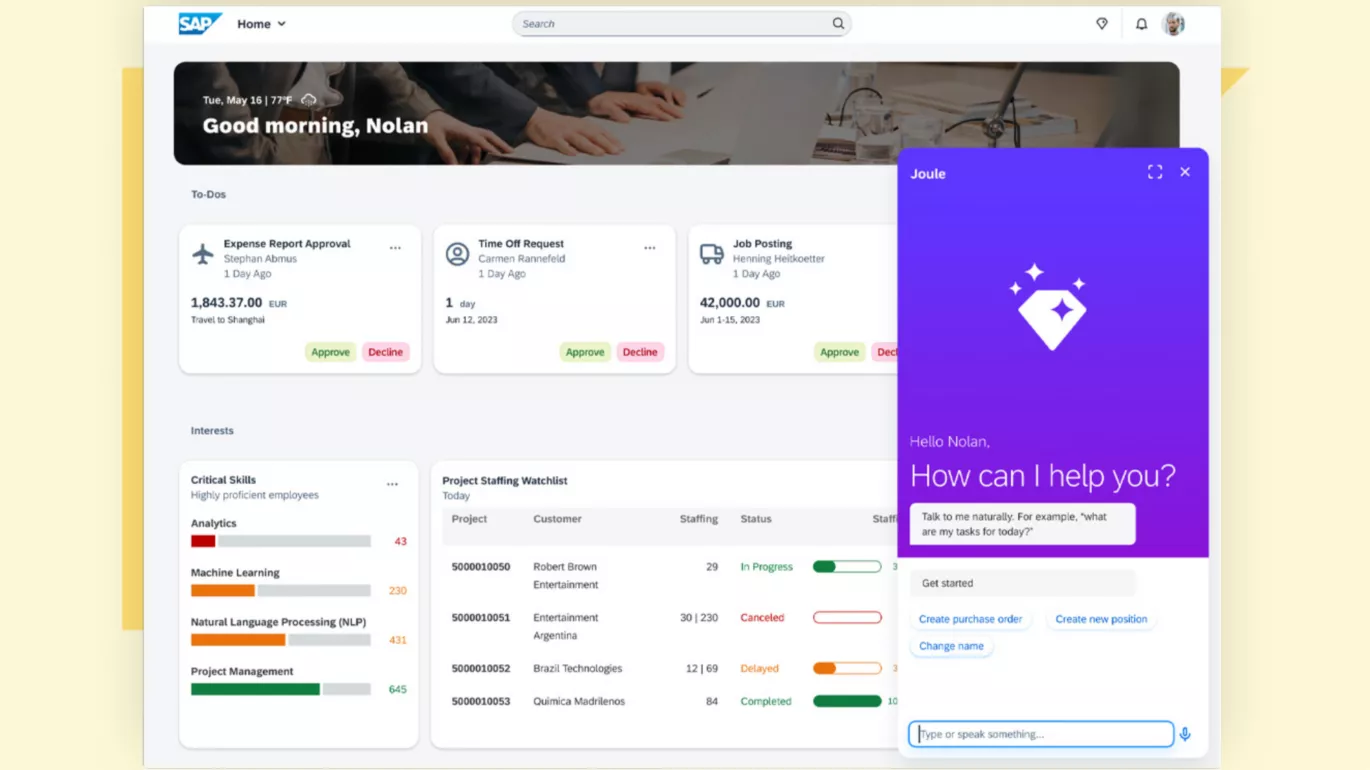
SAP is taking a significant step forward in AI integration with the introduction of Joule, its generative AI copilot. Management software like Joule enhances operational efficiency and decision-making by automating workflows and offering real-time insights into expenses. Planned for availability in SAP spend management solutions by 2024, Joule represents a new era of intelligent assistance in procurement and expense management processes.
Potential Applications:
- Natural language processing for easier user interactions
- Automated data analysis and insights generation
- Personalized recommendations for cost-saving opportunities
- Assistance in creating RFPs, contracts, and other procurement documents
The integration of Joule across SAP’s cloud enterprise portfolio, including spend management solutions, will provide users with an intuitive and powerful tool to enhance productivity and decision-making throughout the procurement lifecycle.
4. AI-Powered Supplier Risk Assessment
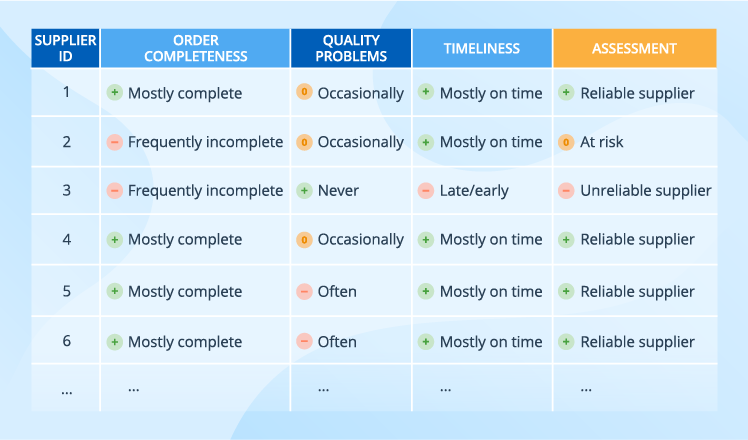
Recognizing the critical importance of supplier risk management, SAP has embedded AI-powered supplier risk assessment capabilities into its source-to-settle solutions. This innovation is already available in SAP Ariba Sourcing, SAP Ariba Contracts, and SAP Ariba Buying.
Key Features:
- Real-time risk profiling of suppliers
- Integration of risk assessment into sourcing, contracting, and buying processes
- AI-driven analysis of supplier data to identify potential risks
Benefits:
- Enhanced visibility into supplier risk factors
- Proactive supplier risk mitigation in the supply chain
- Improved decision-making in supplier selection and management
- Reduced likelihood of supply chain disruptions
By incorporating AI-powered risk assessment directly into procurement workflows, SAP is enabling organizations to make more informed decisions and build more resilient supply chains.
5. Scoutbee Integration: AI-Powered Supplier Discovery and Spend Management
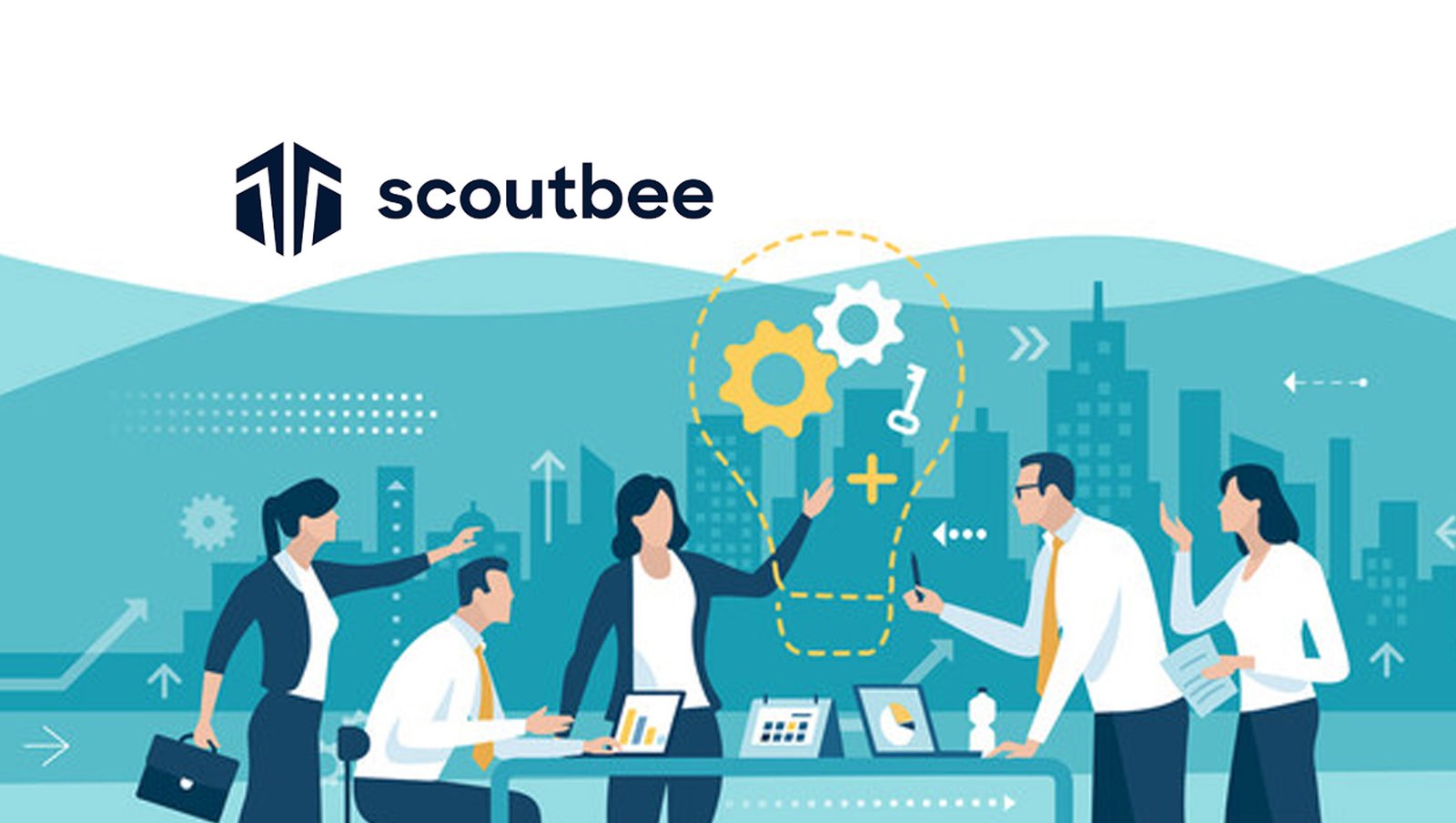
In a strategic move to enhance supplier discovery capabilities, SAP has partnered with Scoutbee, a leading AI-powered supplier intelligence platform. Selecting an effective spend management tool is crucial for optimizing sourcing strategies. This collaboration will integrate Scoutbee’s AI-powered supplier search solution with SAP Ariba Sourcing.
Key Features:
- Rapid identification of suppliers meeting specific criteria
- Automatic import of shortlisted suppliers into guided sourcing events
- AI-driven matching of supplier capabilities with organizational requirements
Benefits:
- Expanded supplier base with qualified and relevant options
- Time savings in supplier research and evaluation
- Improved alignment between supplier capabilities and business needs
- Enhanced strategic sourcing outcomes
The integration of Scoutbee’s technology with SAP Ariba Sourcing will provide procurement teams with a powerful tool to discover new suppliers and optimize their sourcing strategies.
6. SAP Concur Expense Payment Manager: Streamlining Expense Reimbursement
SAP Concur has introduced the Expense Payment Manager solution, addressing the challenges of global expense reimbursement. This innovative solution streamlines the payment process and enhances flexibility in expense management.
Key Features:
- Support for reimbursement in over 25 currencies
- Integration with third-party payment providers
- Streamlined payment processes for faster reimbursements
Benefits:
- Improved employee satisfaction with faster, more accurate reimbursements
- Reduced administrative burden on finance teams
- Enhanced global expense management capabilities
- Increased flexibility in payment provider selection
The Expense Payment Manager solution demonstrates SAP’s commitment to improving the end-to-end expense management process, from submission to reimbursement.
7. Generative AI for RFI/RFP Responses in SAP Business Network in Spend Management

SAP is planning to enhance the SAP Business Network with generative AI capabilities for RFI/RFP responses through its spend management solution. This innovation will significantly improve the efficiency and accuracy of supplier responses to procurement inquiries.
Key Features:
- AI-generated responses to RFIs and RFPs
- Rapid and accurate completion of procurement questionnaires
- Intelligent parsing and interpretation of RFP requirements
Benefits:
- Time savings for suppliers in responding to procurement inquiries
- Improved accuracy and completeness of RFI/RFP responses
- Enhanced collaboration between buyers and suppliers
- Accelerated sourcing processes
By leveraging generative AI in the RFI/RFP process of the spend management solution, SAP is streamlining communication between buyers and suppliers, potentially leading to faster and more effective sourcing decisions.
8. AI-Driven Catalog Enrichment
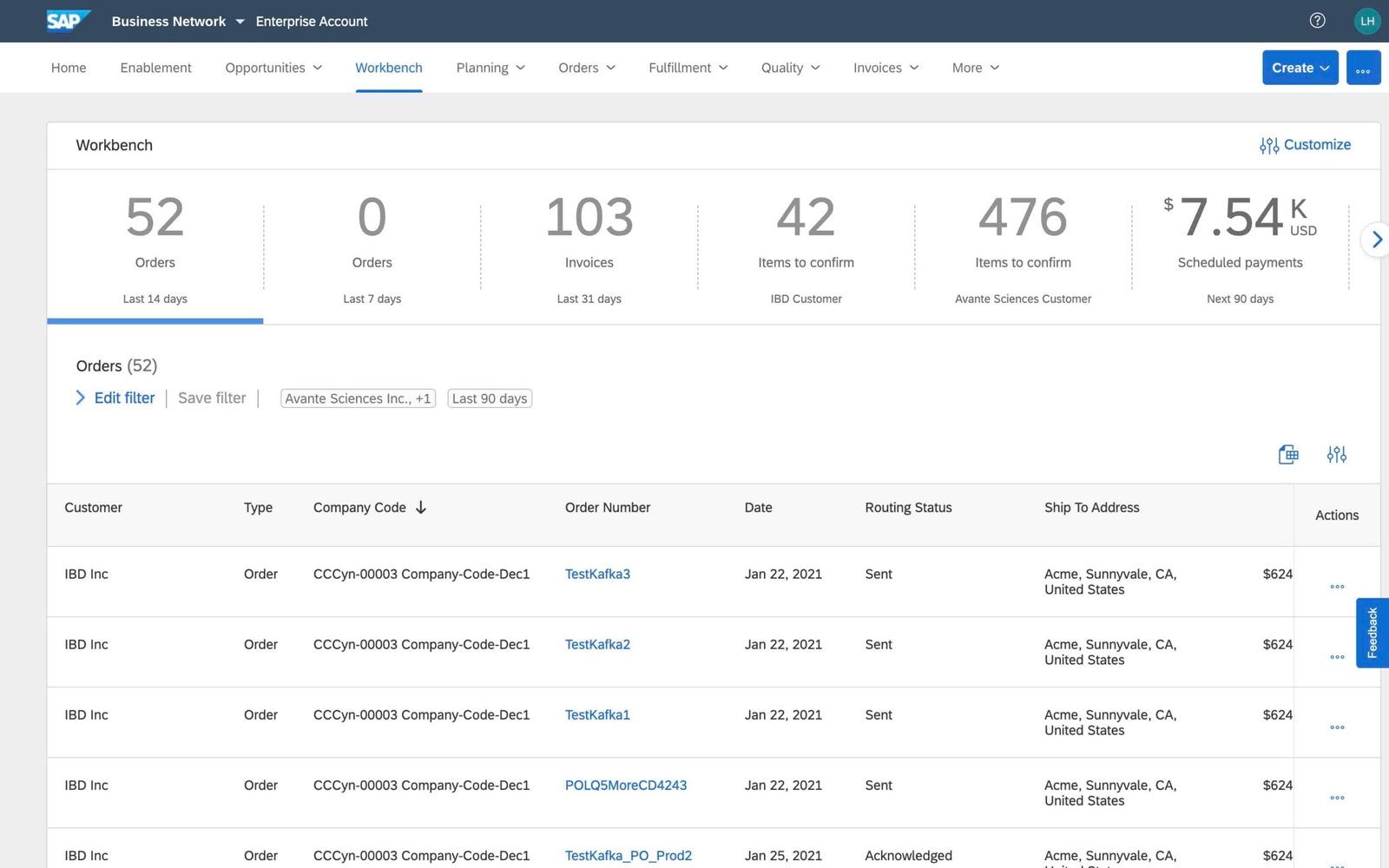
Another innovative feature planned for the SAP Business Network is AI-driven catalog enrichment. This capability will use ChatGPT recommendations to improve product descriptions and overall catalog quality.
Key Features:
- AI-generated product descriptions based on ChatGPT prompts
- Keyword recommendations for improved searchability
- Automated enhancement of catalog content
Benefits:
- Improved product discoverability within procurement catalogs
- Enhanced user experience for buyers searching for products
- Time savings for suppliers in maintaining and updating catalogs
- Potential increase in sales through better product representation
This AI-driven approach to catalog management demonstrates SAP’s commitment to improving the e-commerce experience within its business network, benefiting both buyers and suppliers.
9. Intelligent Error Simplification Using Generative AI

SAP is developing an intelligent error simplification feature using generative AI to interpret and categorize invoice rejection reasons. This innovation aims to reduce the number of failing invoices and optimize cash flow for suppliers.
Key Features:
- Machine learning and large language model integration for error interpretation
- Automated categorization of invoice rejection reasons
- Clear, actionable feedback for suppliers on invoice errors
Benefits:
- Reduction in invoice failures and payment delays
- Improved cash flow management for suppliers
- Decreased manual intervention in invoice processing
- Enhanced overall efficiency of the procure-to-pay process
By simplifying and clarifying invoice errors through AI, SAP is addressing a common pain point in the procurement process, potentially leading to smoother transactions and better supplier relationships.
10. SAP Ariba Sourcing and Buying: Enhanced Real-Time Insights
As part of the SAP Spend Control Tower initiative, SAP has introduced new dashboards in SAP Ariba Sourcing and SAP Ariba Buying solutions. These dashboards provide near real-time insights into key process workflows, enabling procurement teams to make faster, more informed decisions.
Key Features:
- Real-time visibility into sourcing and buying processes
- Interactive dashboards for key procurement metrics
- AI-driven insights and recommendations
Benefits:
- Accelerated decision-making in procurement processes
- Improved visibility into spending patterns and opportunities
- Enhanced ability to respond to market changes and supplier performance issues
- Increased overall procurement efficiency and effectiveness
These enhanced dashboards represent a significant step forward in providing procurement professionals with the tools they need to operate in an increasingly dynamic business environment.
SAP ARIBA and its competitiveness
Here’s a table outlining procurement processes, how SAP Ariba meets the requirements, and its competitive standing:
| Procurement Process | Requirement | SAP Ariba Features | Competitive Standing |
| Supplier Management | Efficient supplier onboarding, evaluation, and collaboration | Supplier lifecycle management, performance tracking, supplier risk management | SAP Ariba offers comprehensive tools; competitive with Coupa and Oracle Procurement Cloud |
| Sourcing | Streamlined sourcing events and RFx management | Sourcing event management, automated RFx processes, supplier discovery | Strong capabilities; comparable to Jaggaer and GEP |
| Contract Management | Centralized contract creation, storage, and compliance | Contract lifecycle management, repository, compliance tracking | Robust features; on par with Icertis and Coupa |
| Procurement | Seamless requisition to order process | Automated purchase requisitions, catalog management, purchase orders | Efficient process; competitive with Coupa and Oracle Procurement Cloud |
| Invoice Management | Accurate invoice processing and payment | Automated invoice capture, matching, and validation | Advanced capabilities; similar to Basware and Coupa |
| Spend Analysis | Comprehensive spend visibility and analytics | Spend analysis, real-time reporting, data enrichment | Powerful analytics; strong competition with Coupa and Jaggaer |
| Supplier Collaboration | Effective communication and collaboration with suppliers | Supplier portal, real-time collaboration, order and shipment tracking | Excellent tools; competitive with GEP and Oracle Procurement Cloud |
| Compliance and Risk Management | Ensuring compliance with policies and mitigating risks | Compliance checks, risk assessment tools, audit trails | Strong compliance features; competitive with Ivalua and Jaggaer |
| Catalog Management | Easy access to supplier catalogs and product information | Centralized catalog management, real-time updates | Effective catalog tools; comparable to Coupa and Jaggaer |
How SAP Ariba Stands Against Competition
- Supplier Management: SAP Ariba offers a comprehensive suite for supplier lifecycle and performance management, standing strong against competitors like Coupa and Oracle Procurement Cloud by providing robust tools for risk assessment and supplier collaboration.
- Sourcing: Ariba’s automated RFx processes and supplier discovery tools are highly competitive, comparable to solutions offered by Jaggaer and GEP. Its sourcing capabilities streamline procurement and improve efficiency.
- Contract Management: SAP Ariba’s contract lifecycle management and compliance tracking are robust, making it competitive with leading solutions like Icertis and Coupa, offering a centralized and compliant contract system.
- Procurement: Ariba excels in automating purchase requisitions and order management, making it highly competitive with Coupa and Oracle Procurement Cloud, offering an efficient and seamless procurement process.
- Invoice Management: Ariba’s automated invoice capture and validation processes are advanced, comparable to Basware and Coupa, providing accuracy and efficiency in invoice management.
- Spend Analysis: With powerful analytics and real-time reporting, SAP Ariba provides comprehensive spend visibility, standing strong against Coupa and Jaggaer with its advanced spend analysis capabilities.
- Supplier Collaboration: Ariba’s real-time collaboration tools and supplier portal are excellent, making it highly competitive with GEP and Oracle Procurement Cloud by enhancing supplier communication and collaboration.
- Compliance and Risk Management: Ariba offers strong compliance and risk management features, competitive with Ivalua and Jaggaer, ensuring adherence to policies and effective risk mitigation.
- Catalog Management: SAP Ariba’s centralized catalog management and real-time updates make it effective and competitive with Coupa and Jaggaer, providing easy access to supplier catalogs and product information.
How does SAP Ariba integrate with other SAP solutions for comprehensive spend management
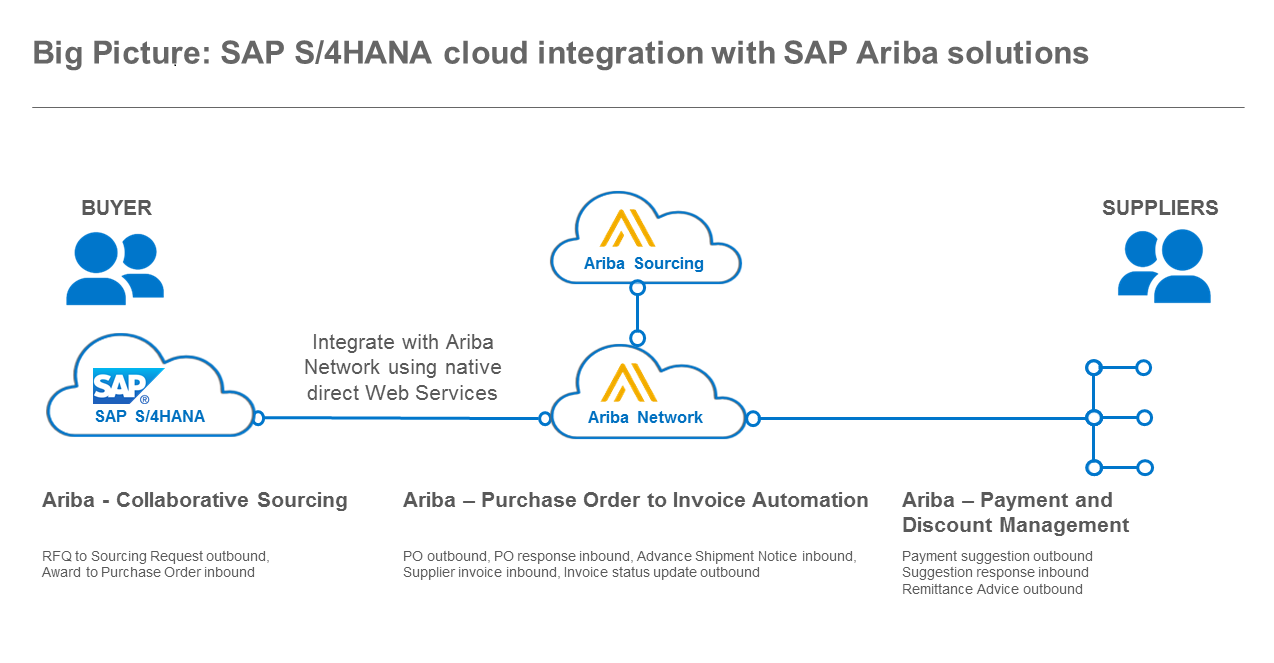
- Integration with SAP S/4HANA:
- SAP Ariba Cloud Integration Gateway (CIG) serves as a middleware solution to connect SAP Ariba with SAP S/4HANA and other ERP systems.
- This integration enables seamless data exchange for procure-to-pay processes, including purchase orders, invoices, and goods receipts
- It allows for real-time synchronization of master data, transactional data, and supplier information between the systems.
- Integration with SAP Concur:
- SAP Concur integrates with SAP Ariba to provide a holistic view of travel and expense management alongside procurement.
- This integration allows for automated data synchronization between expense reports and procurement transactions.
- It enables better visibility into overall company spend across both direct and indirect categories.
- Integration with SAP Fieldglass:
- SAP Fieldglass integrates with SAP Ariba to provide a comprehensive solution for managing external workforce and services procurement.
- This integration allows for better control and visibility over contingent labor and statement of work-based services spending.
- SAP Business Technology Platform:
- The SAP Business Technology Platform serves as a foundation for integrating various spend management solutions, including SAP Ariba, SAP Concur, and SAP Fieldglass.
- It provides analytics, artificial intelligence, and integration capabilities to enhance the overall spend management process
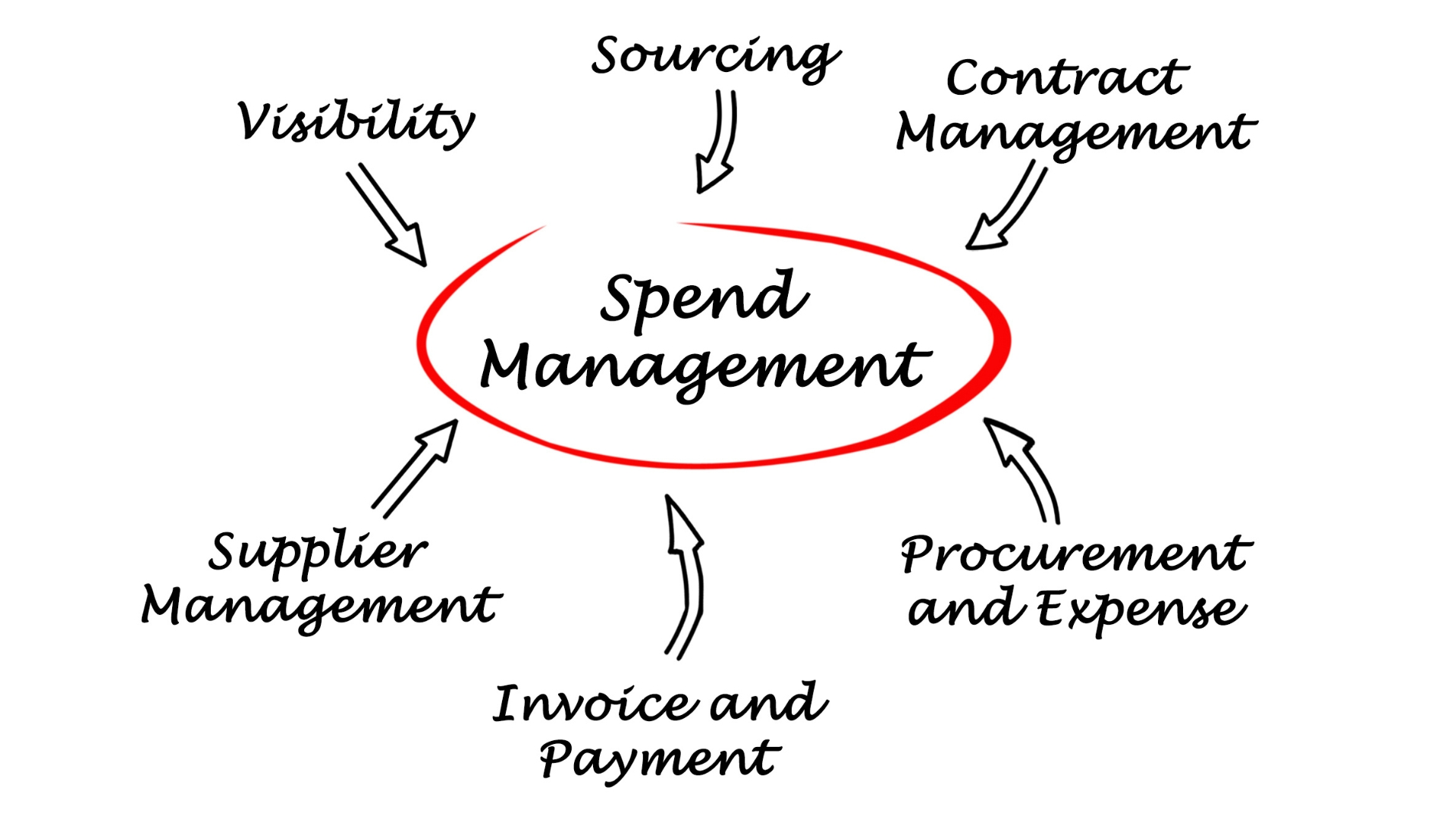
- Unified User Experience:
- The integration of these solutions aims to provide a seamless user experience across different spend management processes.
- Users can access various spend management functions through a single interface, improving efficiency and adoption.
- Enhanced Analytics and Reporting:
- The integration allows for consolidated reporting and analytics across different spend categories, providing a holistic view of company spending.
- This enables better decision-making and identification of cost-saving opportunities.
- Streamlined Supplier Management:
- The integration facilitates a unified approach to supplier lifecycle management across different spend categories.
- It enables better collaboration with suppliers and improved risk management.
- Automated Workflows:
- The integration enables end-to-end process automation, from sourcing and procurement to payment and reconciliation
- This reduces manual efforts and improves overall process efficiency.
By integrating SAP Ariba with other SAP solutions, organizations can achieve a more comprehensive and efficient approach to spend management, covering various aspects such as direct and indirect procurement, travel and expense management, and external workforce management. This integration provides better visibility, control, and optimization opportunities across the entire spend lifecycle.
Common Challenges in Spend Management and How to Overcome Them
- Lack of Visibility: Difficulty in tracking and managing all expenses across the organization.
- Decentralized Purchasing: Inconsistent purchasing practices across different departments leading to inefficiencies.
- Supplier Management Issues: Challenges in managing supplier relationships and negotiating favorable terms.
- Compliance Risks: Ensuring that spending practices comply with both internal policies and external regulations.
Spend Management Best Practices
- Centralized Procurement: Implementing a centralized purchasing system to standardize processes and improve control.
- Regular Spend Audits: Conducting regular audits to review spending patterns and ensure adherence to budgets.
- Employee Training: Educating employees on spending policies and procedures to promote responsible spending behavior.
- Continuous Improvement: Continuously monitoring and refining spend management processes to adapt to changing business needs.
The Future of Spend Management with SAP

SAP’s innovative spend management software are set to transform the landscape of procurement, sourcing, and expense management. By leveraging cutting-edge technologies such as generative AI, machine learning, and advanced analytics, SAP is empowering organizations to:
- Gain unprecedented visibility into their spending patterns
- Make data-driven decisions with real-time insights
- Automate and streamline procurement and expense management processes
- Enhance supplier relationships and risk management
- The finance team can drive significant cost savings and operational efficiencies
As these innovations continue to evolve and integrate more deeply into SAP’s suite of spend management software, the finance team can expect to see even greater benefits in terms of cost control, expenditure data management, risk mitigation, and strategic procurement. The future of spend management is intelligent, automated, and data-driven.

In Summary
With SAP’s innovative spend management software leading the way, businesses are well-positioned to navigate the complexities of modern procurement, spend analysis and expense management, ultimately driving growth and competitive advantage in an increasingly challenging global marketplace.
By embracing these innovative SAP spend management software, organizations can transform their procurement, spend analysis and expense management processes, positioning themselves for optimized company’s spending in the cost reduction age. As SAP continues to push the boundaries of what’s possible in spend management, businesses that adopt these cutting-edge technologies will be well-equipped to thrive in an ever-changing economic landscape.
If you liked this article, please share it and subscribe to my website. For consulting work, please visit my website, Shift Gear and I would be glad to help you in your requirement.
Check this also – Transform Sports Data: Databricks and Delta Sharing Revolution! – Tech News Before It’s News | Shift GearX
You will also love this – Open Foundational Models in Generative AI Solutions. Learn More! – Tech News Before It’s News | Shift GearX




